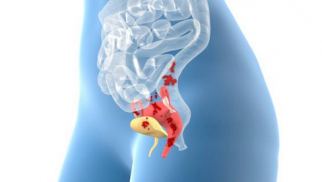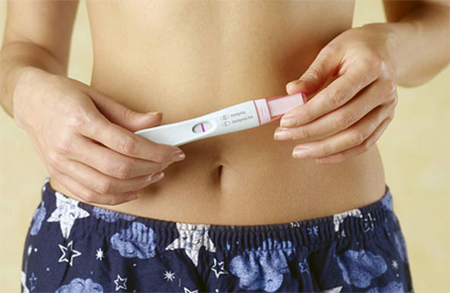What is endometriosis and what drugs are used to treat it?


Endometriosis is a disease of the women’s reproductive system distinguished by the extension of the inner lining of the uterus (endometrium) begins to the underlying structures (myometrium), adjacent organs (fallopian tubes, ovaries, bladder), and even distant organs (spleen, pancreas, etc.). The foci of the endometrium spreading beside the uterus are also subject to the menstrual cycle, which means, during menstruation, they also bleed. The initial manifestations of pathology are painful, profuse, and prolonged menstruations.
Around 25-40% of female infertility occurs due to endometriosis. This disease can become a significant obstacle as it prevents the staying of the fertilized egg in the uterus. It can also cause miscarriages. Moreover, endometriosis can affect the entire female body, leading to disruption of the functioning of many internal organs and systems.
Short information about endometriosis
Why endometriosis occurs?
Despite the many studies conducted to identify causes of endometriosis development, there is no single proven opinion among scientists and doctors. There are many genetic, immune, and other, less common theories. Let’s discuss the most reliable theory.
There are two main forms of endometriosis, different in their causes and manifestations:
- Genital. It affects the internal genital organs: uterus, fallopian tubes, ovaries, and vagina. It occurs due to the chronic inflammatory process (endometritis of any nature), abortion, injury, or the use of intrauterine devices. This type is divided into two subtypes:
- External genital. Only the ovaries and the pelvic abdominal cavity are affected.
- Internal genital (adenomyosis or endometriosis of the uterus). It grows into the muscle layer, leading to an increase in the uterus size. It is often combined with fibroids.
- Extragenital. Foci occur in the pelvic organs, abdominal cavity, lungs, intestines, skin, etc. During menstruation, blood with rejected endometrial cells for various reasons first enters the fallopian tubes, and then into the abdominal cavity. On walls of the abdominal cavity, endometrial cells take root, gradually increase in number, menstruate, and, later, spread further throughout the body.
There are known cases of a combination of genital and extragenital endometriosis.
There are 4 stages of endometriosis, based on the prevalence and depth of the foci:
- Stage I - Small-sized lesions, superficial (affecting only the uterine lining) - minimal endometriosis.
- Stage II - Some lesions penetrate into the muscular membrane - mild endometriosis.
- Stage III - deep, transmural (through the entire wall of the uterus) foci of endometriosis appear. Small endometrioid ovarian cysts develop.
- IV stage - there are many deep foci, cysts reach significant sizes. Endometriosis foci grow into neighboring organs (vagina, rectum, bladder), adhesions develop in the small pelvis - severe endometriosis.
How is endometriosis manifested?
Reliant on the form of the disease (genital, extragenital) and the disease stage, the manifestations may be different. And if in the extragenital form, the symptoms depend on the affected organs, then genital endometriosis has a number of characteristic signs:

- Pain syndrome. The pain is felt in the pelvic area, it can either get worse before the period or be constant. Soreness often occurs during intercourse. At stage IV of the disease, pain may occur during urination or bowel movements. In case of damage to other organs, pain may also occur in their area before the period.
- Bleeding. During the early stages of endometriosis, excessive bleeding develops only during menstruation. They become long-lasting, profuse, after their end, the characteristic brown discharge may continue. In the later stages of the disease, an admixture of blood appears in the feces, urine. The extragenital form is capable of causing bloody sputum discharge, the occurrence of subcutaneous hemorrhages. These manifestations occur synchronously with the start of the period. A rather rare manifestation of extragenital endometriosis is a bloody tear. The presence of this symptom gave rise to many myths and legends in ancient times and the Middle Ages.
- Dysmenorrhea. It manifests itself as painful, prolonged, and abundant cyclic discharge. As a result, anemia (low red blood cell count) can develop at the end of menstruation.
- Infertility. Due to changes in the endometrium and ovaries, and constant anemia due to bleeding, the occurrence and course of pregnancy become quite problematic.
- Pelvic adhesive disease. Due to the constant flow of period blood into the abdominal cavity, especially in the pelvic area, adhesions gradually develop. They reduce the mobility of internal organs, fallopian tubes, the body of the uterus, which can even more significantly reduce the chance of pregnancy. In severe cases, acute or chronic intestinal obstruction is possible.
- Extragenital lesion. Perhaps this group of manifestations is the most diverse. This is due to the wide variety of the symptoms inherent in the damage of one or another organ. Signs of tumor of the liver, lungs, respiratory failure, jaundice, gastrointestinal bleeding, hematuria (blood in the urine), etc. may develop.
Why is endometriosis dangerous?

The aggravations of the disease are closely related to its manifestations and symptoms. The most serious complications include:
- Infertility.
- Pelvic adhesive disease.
- Anemia.
- Damage to the central nervous system.
- Malignancy of endometriosis foci (they can transform into cancerous tumors).
If a woman with endometriosis becomes pregnant, its course may be complicated by the threat of miscarriage, improper attachment of the placenta, and fetal hypoxia. The adhesion process can lead to the development of an ectopic pregnancy.
Endometriosis diagnosis
The diagnosis is made based on the set of methods:
- Collection of anamnesis (history of symptoms) and gynecological examination.
- Ultrasound examination. It allows to detect foci in the ovaries - endometrioid cyst and in the uterus (adenomyosis) and to establish signs of adhesion in the pelvic area.

- MRI - magnetic resonance imaging - helps in the differential diagnosis of adenomyosis and uterine fibroids. It can help to find lesions of the pelvic organs - the bladder and intestines and detect the spread of endometriosis outside the pelvis.
- Endoscopic diagnostic methods - laparoscopy. The most reliable way to detect endometriotic lesions with the possibility of eliminating them during the procedure.
First two methods and the most widely used because based on them a doctor can decide whether further examinations are needed. It is advised to go to a gynecologist and do an ultrasound examination in case a woman suffers from:
- Painful, abundant, and long periods;
- Pain during intercourse.;
- Chronic pelvic pain;
- Pain in the lower back;
- Painful urination;
- Painful bowel movements.
How is endometriosis treated?
Today, there are three main treatment methods: drug, surgical, and combined. Each method has its positive and negative sides, scope. When choosing a treatment, the doctor is guided by the age, stage and form of the disease, and planning a subsequent pregnancy.
Drug treatment

Conservative treatment is used when it is necessary to preserve the fertility of a woman and when preparing for surgery. Treatment is carried out in two directions: elimination of pain syndrome (analgesics, NSAIDs) and suppression of the activity of pathological foci with the help of hormonal drugs. It should be understood that conservative treatment of endometriosis without hormones is impossible.
Combined oral contraceptives (COCs) or progestins are prescribed as first-line therapy. To cope with pain, analgesics, NSAIDs are prescribed.
Hormone therapy is aimed at suppressing activity and reducing the size of endometrial foci. The selection of a treatment regimen is based on the minimum side effects from drugs. The most widely used medications are:
Surgery
Currently, more and more preference is given to organ-preserving operations, which exclude resection of the uterus and its appendages. This trend is due to the great progress in minimally invasive surgery over the past 10-15 years. The main goal of surgery today is the removal of foci and the maximum restoration of the functionality of the woman’s reproductive system.
Excision of endometriotic lesions is recommended where possible, especially deep endometriotic lesions, laparoscopic cystectomy of endometrioid cysts (endometriomas). This avoids the recurrence of symptoms and endometriomas.
Prevention
In order to prevent endometriosis, the following provoking factors should be avoided: acute or chronic inflammatory processes in the uterus (timely treatment of vaginal infections), prevention of injuries of the uterus, avoiding medical abortion.
Post by Karen Willson, gynecologist at Mother and Baby Centre, London, UK
(Updated at Apr 14 / 2024)
Duphaston articles:
Some of the trademarks used in this Web Site appear for identification purposes only.
All orders are reviewed by a licensed physician and pharmacist before being dispensed and shipped.
The statements contained herein are not intended to diagnose, treat, cure or prevent disease. The statements are for informational purposes only and is it not meant to replace the services or recommendations of a physician or qualified health care practitioner. If you have questions about the drugs you are taking, check with your doctor, nurse, or pharmacist.